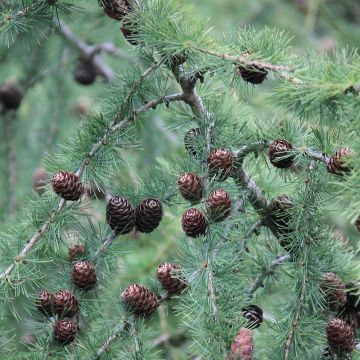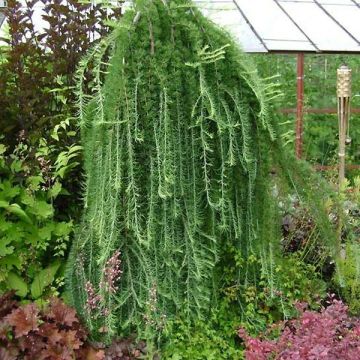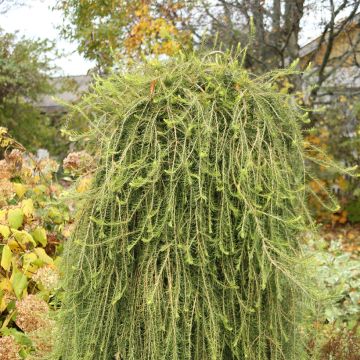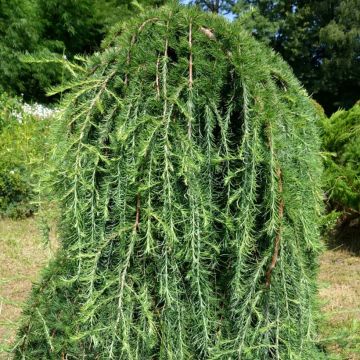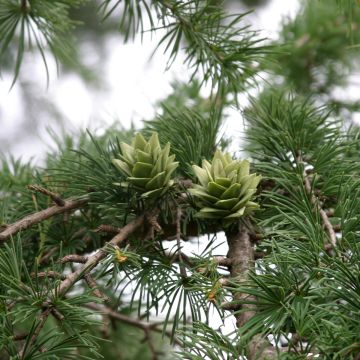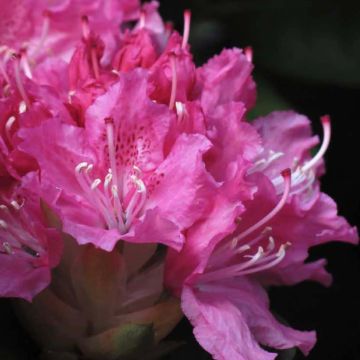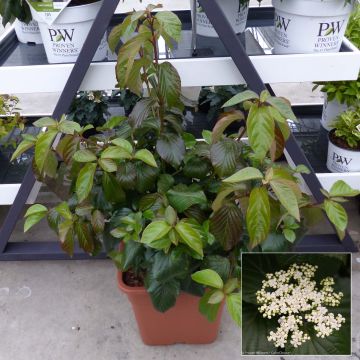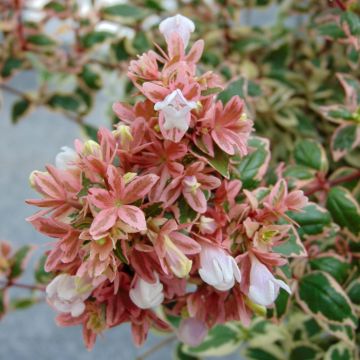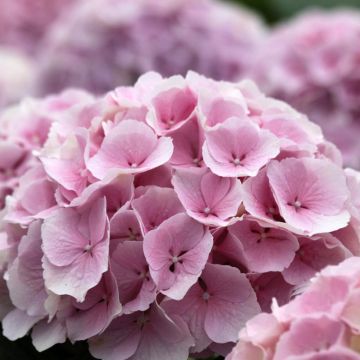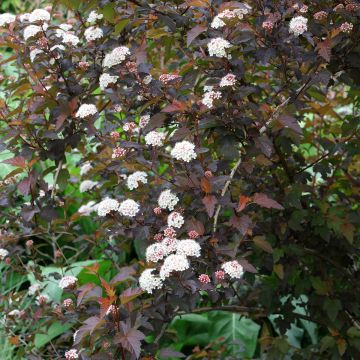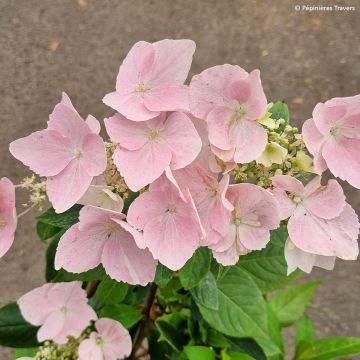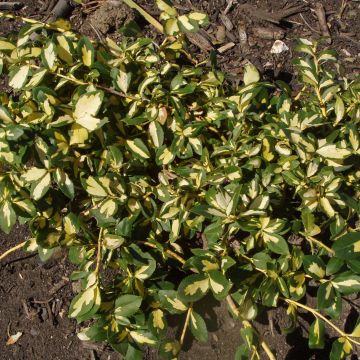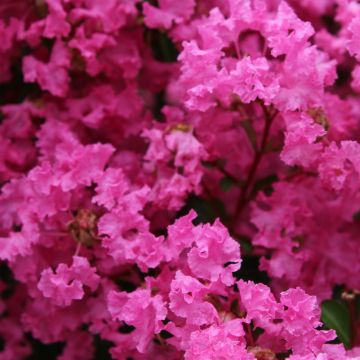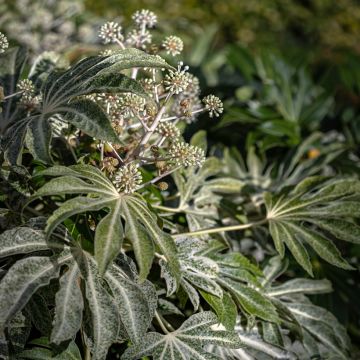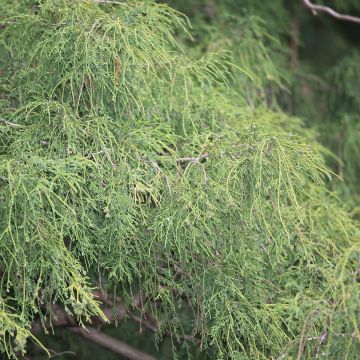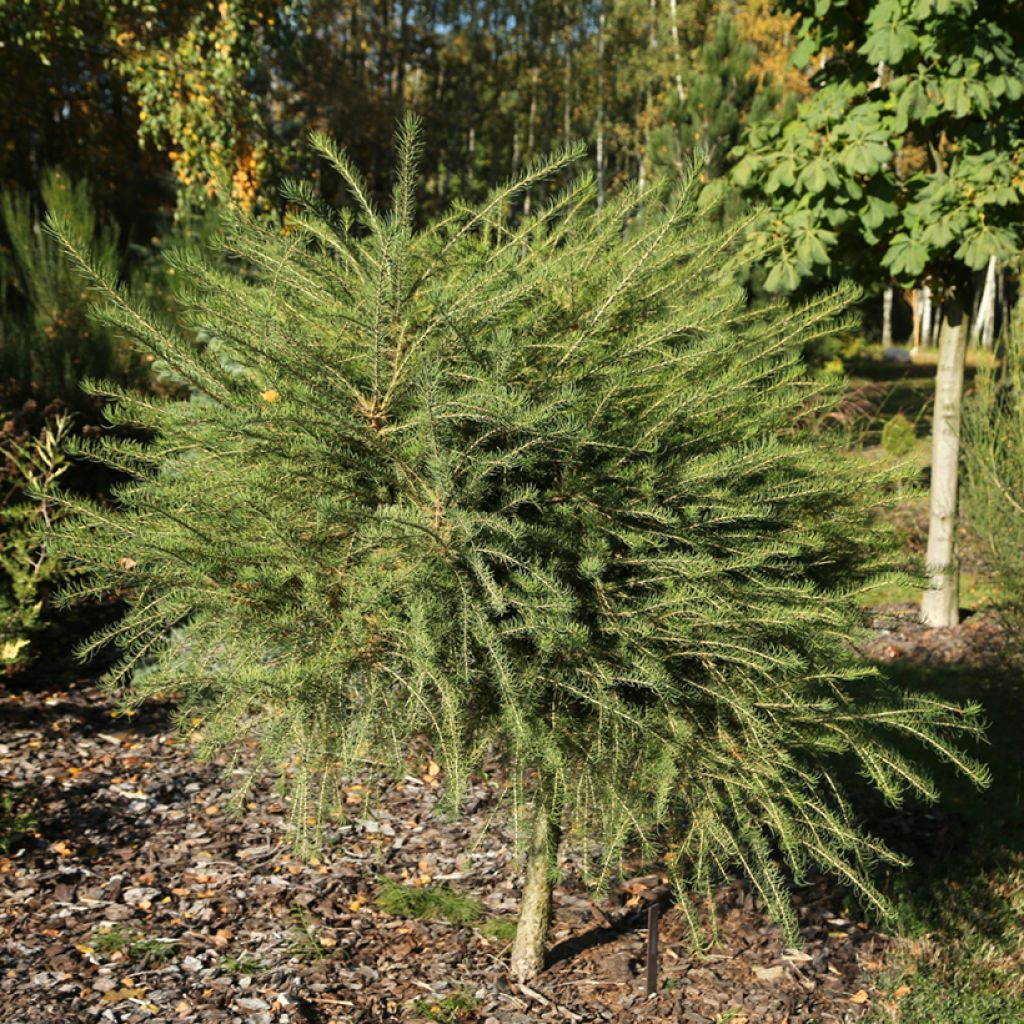

Larix decidua Compacta
Larix decidua Compacta
Larix decidua Compacta
European Larch, Common Larch
Why not try an alternative variety in stock?
View all →This plant carries a 24 months recovery warranty
More information
We guarantee the quality of our plants for a full growing cycle, and will replace at our expense any plant that fails to recover under normal climatic and planting conditions.
From €5.90 for pickup delivery and €6.90 for home delivery
Express home delivery from €8.90.
Does this plant fit my garden?
Set up your Plantfit profile →
Description
Larix decidua 'Compacta' is one of the few dwarf forms of European larch and is characterised by a rounded habit. This conifer is often grafted onto a stem to highlight its globular crown. Its non-prickly, deciduous foliage appears in spring, turning a beautiful golden yellow in autumn before falling. This small tree can be used as a centrepiece in small gardens or patios. It can also be showcased in a large container on a terrace.
The European larch, Larix decidua, is a large conifer that can reach 30 metres in height, with deciduous foliage. It is native to the mountains of central and southern Europe, where it is found at altitudes between 1400 and 2400 metres. It is a pioneer species capable of improving poor or degraded soils, with great hardiness (down to -40°C). Highly valued for its wood, it adapts very well to lowland cultivation. It belongs to the family Pinaceae, like pines, firs, and spruces. It is a very close species to the Japanese Larix kaempferi.
Larix decidua 'Compacta' reaches about 1 metre in height and 80 cm in width at the age of 10. It is grafted onto a stem 1.20 to 2 metres high, which serves as its trunk. Eventually, it forms a small "ball" tree measuring between 2 and 3 metres in height with a roughly equivalent spread. In spring, the branches are adorned with soft needle-like, bright light green foliage, which then turns dark green before becoming golden yellow in autumn. The needles are grouped in tufts composed of 35 to 40 on short branches. Covering its trunk, smooth grey bark becomes brownish-red and cracks into scales with age.
The 'Compacta' European larch is an architectural, undemanding small conifer, easy to cultivate as long as the soil does not dry out too much and it is in a sunny location. Its silhouette perfectly complements the clean lines of contemporary or French gardens. It can also be easily grown in pots to decorate the terrace or balcony. In the garden, enhance it by planting summer heathers (Calluna) at its base, a few painted Japanese painted ferns (Athyrium niponicum var. pictum), or Japanese forest grass (Hakonechloa macra).
Tips: Water regularly during the first two years, and in prolonged drought. While it can tolerate periodically dry soil in cool climates, this conifer will be disappointing in Mediterranean climates, which are too dry and hot in summer.
Report an error about the product description
Plant habit
Foliage
Botanical data
Larix
decidua
Compacta
Pinaceae
European Larch, Common Larch
Cultivar or hybrid
Other Larix - Larch
Planting and care
Larix decidua 'Compacta' is a bush that thrives in mountain climates and is sensitive to arid conditions and heat waves. It should be planted from September to November in well-drained soil that retains moisture, even if it is poor and not excessively chalky, in a sunny location. A mixture of coarse sand, peaty soil, and compost added to the garden soil will work well. If your soil is too heavy, a good trick is to plant your bush on a mound and mulch it with gravel. Water regularly during the first two years, especially during prolonged drought. Soak the root balls well before planting. This hardy conifer dislikes heavy, waterlogged soils. Pruning is not essential, but this conifer can be pruned to maintain or enhance its original habit in February-March.
Planting period
Intended location
Care
This item has not been reviewed yet - be the first to leave a review about it.
Shrubs for pots
Haven't found what you were looking for?
Hardiness is the lowest winter temperature a plant can endure without suffering serious damage or even dying. However, hardiness is affected by location (a sheltered area, such as a patio), protection (winter cover) and soil type (hardiness is improved by well-drained soil).

Photo Sharing Terms & Conditions
In order to encourage gardeners to interact and share their experiences, Promesse de fleurs offers various media enabling content to be uploaded onto its Site - in particular via the ‘Photo sharing’ module.
The User agrees to refrain from:
- Posting any content that is illegal, prejudicial, insulting, racist, inciteful to hatred, revisionist, contrary to public decency, that infringes on privacy or on the privacy rights of third parties, in particular the publicity rights of persons and goods, intellectual property rights, or the right to privacy.
- Submitting content on behalf of a third party;
- Impersonate the identity of a third party and/or publish any personal information about a third party;
In general, the User undertakes to refrain from any unethical behaviour.
All Content (in particular text, comments, files, images, photos, videos, creative works, etc.), which may be subject to property or intellectual property rights, image or other private rights, shall remain the property of the User, subject to the limited rights granted by the terms of the licence granted by Promesse de fleurs as stated below. Users are at liberty to publish or not to publish such Content on the Site, notably via the ‘Photo Sharing’ facility, and accept that this Content shall be made public and freely accessible, notably on the Internet.
Users further acknowledge, undertake to have ,and guarantee that they hold all necessary rights and permissions to publish such material on the Site, in particular with regard to the legislation in force pertaining to any privacy, property, intellectual property, image, or contractual rights, or rights of any other nature. By publishing such Content on the Site, Users acknowledge accepting full liability as publishers of the Content within the meaning of the law, and grant Promesse de fleurs, free of charge, an inclusive, worldwide licence for the said Content for the entire duration of its publication, including all reproduction, representation, up/downloading, displaying, performing, transmission, and storage rights.
Users also grant permission for their name to be linked to the Content and accept that this link may not always be made available.
By engaging in posting material, Users consent to their Content becoming automatically accessible on the Internet, in particular on other sites and/or blogs and/or web pages of the Promesse de fleurs site, including in particular social pages and the Promesse de fleurs catalogue.
Users may secure the removal of entrusted content free of charge by issuing a simple request via our contact form.
The flowering period indicated on our website applies to countries and regions located in USDA zone 8 (France, the United Kingdom, Ireland, the Netherlands, etc.)
It will vary according to where you live:
- In zones 9 to 10 (Italy, Spain, Greece, etc.), flowering will occur about 2 to 4 weeks earlier.
- In zones 6 to 7 (Germany, Poland, Slovenia, and lower mountainous regions), flowering will be delayed by 2 to 3 weeks.
- In zone 5 (Central Europe, Scandinavia), blooming will be delayed by 3 to 5 weeks.
In temperate climates, pruning of spring-flowering shrubs (forsythia, spireas, etc.) should be done just after flowering.
Pruning of summer-flowering shrubs (Indian Lilac, Perovskia, etc.) can be done in winter or spring.
In cold regions as well as with frost-sensitive plants, avoid pruning too early when severe frosts may still occur.
The planting period indicated on our website applies to countries and regions located in USDA zone 8 (France, United Kingdom, Ireland, Netherlands).
It will vary according to where you live:
- In Mediterranean zones (Marseille, Madrid, Milan, etc.), autumn and winter are the best planting periods.
- In continental zones (Strasbourg, Munich, Vienna, etc.), delay planting by 2 to 3 weeks in spring and bring it forward by 2 to 4 weeks in autumn.
- In mountainous regions (the Alps, Pyrenees, Carpathians, etc.), it is best to plant in late spring (May-June) or late summer (August-September).
The harvesting period indicated on our website applies to countries and regions in USDA zone 8 (France, England, Ireland, the Netherlands).
In colder areas (Scandinavia, Poland, Austria...) fruit and vegetable harvests are likely to be delayed by 3-4 weeks.
In warmer areas (Italy, Spain, Greece, etc.), harvesting will probably take place earlier, depending on weather conditions.
The sowing periods indicated on our website apply to countries and regions within USDA Zone 8 (France, UK, Ireland, Netherlands).
In colder areas (Scandinavia, Poland, Austria...), delay any outdoor sowing by 3-4 weeks, or sow under glass.
In warmer climes (Italy, Spain, Greece, etc.), bring outdoor sowing forward by a few weeks.

































